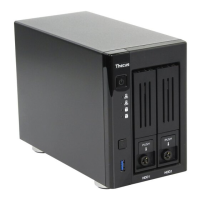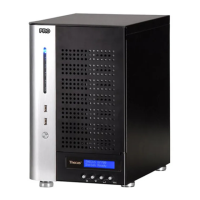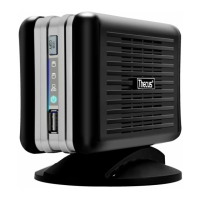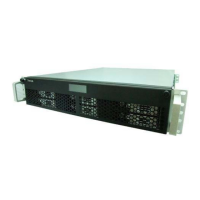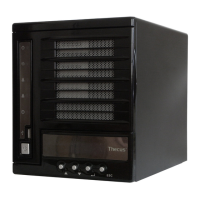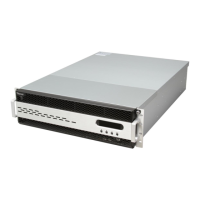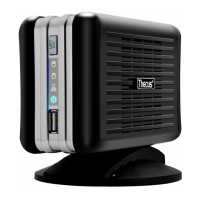Do you have a question about the Thecus N2310 series and is the answer not in the manual?
| Memory | 512MB DDR3 |
|---|---|
| RAID Support | RAID 0, 1, JBOD |
| Drive Bays | 2 x 3.5" SATA HDD |
| Network Interface | 1 x Gigabit Ethernet |
| USB Ports | 2 x USB 3.0 |
| Network Protocols | CIFS/SMB, AFP, NFS, FTP, HTTP |
| Power Consumption | 5W (Standby) |
| Operating System | ThecusOS |
Details the indicators and hard disk install slots on the front of the device.
Details the ports and connectors featured on the rear panel of the device.
Provides steps for connecting the Thecus IP storage to the network and power.
Explains how to access and log in to the Web Administration Interface.
Information on viewing product info, system status, services, and logs.
Displays status and configuration options for storage devices like RAID and disks.
Displays status and information of installed hard disks.
Lists RAID volumes, their status, and allocated capacities.
Manages user access, groups, and file sharing settings.
Configure network services like Samba, FTP, SSH, and WebService.
Options for backing up data locally or remotely.
Steps to set up remote backup tasks for the NAS.
Steps to set up local backup tasks to devices or folders.
Connect and configure external devices like printers and UPS.
Explains what RAID is and its benefits for data security and performance.
Describes standard RAID levels (0, 1, 5, 6, 10, JBOD) and selection factors.
Details RAID 0 for performance, without redundancy.
Details RAID 1 for data redundancy through mirroring.
Details RAID 5 for data security with striping and parity.


